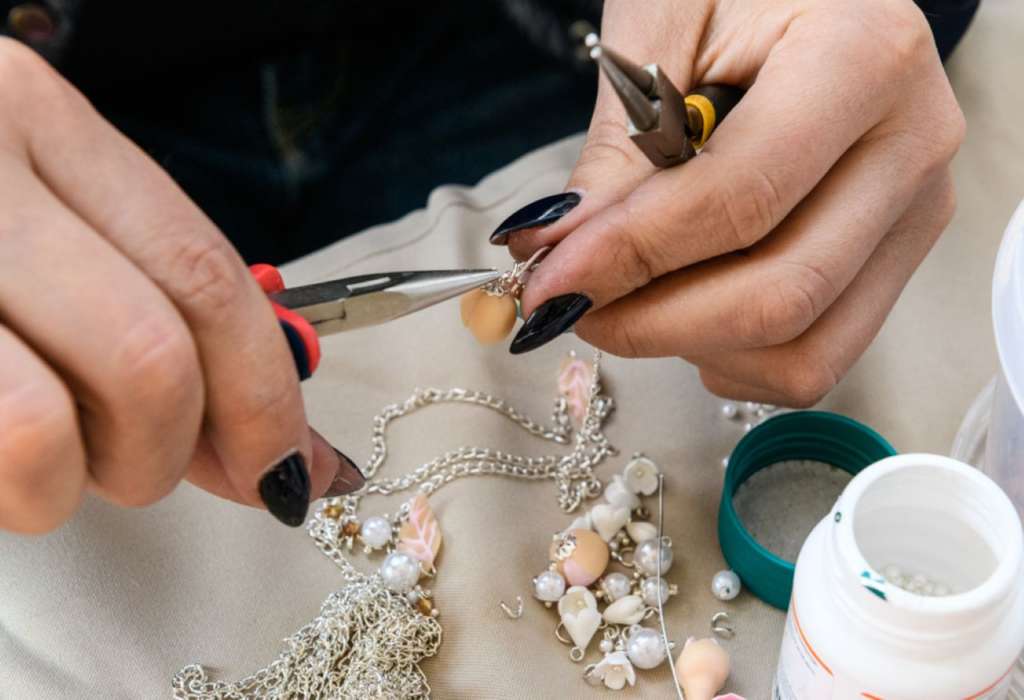Considering a Jewellery Making Course?
Jewellery making is an excellent hobby to have that can be easily learned through doing a jewellery making course. Do you like the idea of making unique jewellery from scratch? Doing a jewellery making course will enable you to escape your mind and focus on the skill that is jewellery making. It is a great opportunity to meet new people and make new friends too. Not to mention, doing a jewellery making course could be your first steps toward a career in the jewellery and goldsmith industry. The good news is there are tons of jewellery making courses currently available.
A History of Jewellery Making
Jewellery is one of the oldest artifacts from history. The first discovered jewellery item dates back to 100,000 years. Modern jewellery and jewellery making methods are the product of thousands of years of technological development and cultural exchange. The first known examples of jewellery originated in Africa. They were known as shell jewellery. They used snail shells and ostrich egg shells which dated back nearly 75,000 years ago. Later in time, early jewellery was made from teeth, stones, bones and similar materials.
Although evidence of jewellery existed, it was not until 3000-5000 BC in Ancient Egypt that jewellery making was truly established. In Egypt during 3000 BC, gold was used in metalworking. Ancient Egypt was known for its rich design and artwork. The use of collars, necklaces, bracelets and more all in gold aligns with the extravagance of that time. During that time, gold was mined from the Nubian dessert and because of its malleable nature, it was an easy metal to work with.
Egyptians also worked with glass, lapis lazuli and other semi-precious stones. The ancient Greeks also used gold in their jewellery, however, they incorporated more precious stones. By 300 BC, the Ancient Greeks used emeralds, pearls and much more in their jewellery designs. Eventually, Roman jewellery design would dominate the region because of the scope and size of the Ancient Roman Empire.
The Romans were the ones to introduce the brooch as a functional accessory. They also used Sri Lankan sapphires, amber and emeralds. After the fall of the Roman Empire, Europe continued to develop the practice of jewellery making. During the Middle Ages, clothing fasteners, amulets and signet rings were very popular jewellery accessories. During the Renaissance, the trade increased which led to a dissemination of jewellery making methods and materials which led to the prominence of gemstones.
The 19th century saw the return to extravagant jewellery making. During this time, it was popular to use precious stones and matching suites. During this time, costume design also began to emerge. Jewellery was also used as a means to distinguish different groups of society. Wealthy people sought detailed and intricate jewellery designs to help them stand out from the middle class. The top two and most notable jewellers in the world today are Tiffancy & Co and Cartier.
Areas of Study
Jewellery making courses are generally project-led with an emphasis on completing jewellery pieces. The courses typically run for between 8 to 10 weeks. You can expect to learn how to use the piercing saw, how to make rings, stone setting, filing, piercing, polishing, how to use the pendant drill and the polishing motor and much more. You can also expect to be introduced to soldering skills and you will learn how to anneal metal to make it malleable so that it can be formed. Some courses will also cover the materials used in jewellery making and jewellery design.
Career Progression
There are opportunities to further your jewellery making education. This depends on what course you decide to do. For example, once you complete your evening classes, you could consider doing a part-time QQI PLC course to get a diploma in jewellery making. This is a great step if you are serious about jewellery making. Doing additional jewellery making courses at higher levels will do wonders for your CV when it comes to job hunting.
If your serious about doing a jewellery making course, check out courses near you in the Nightcourses.co.uk national course finder.







